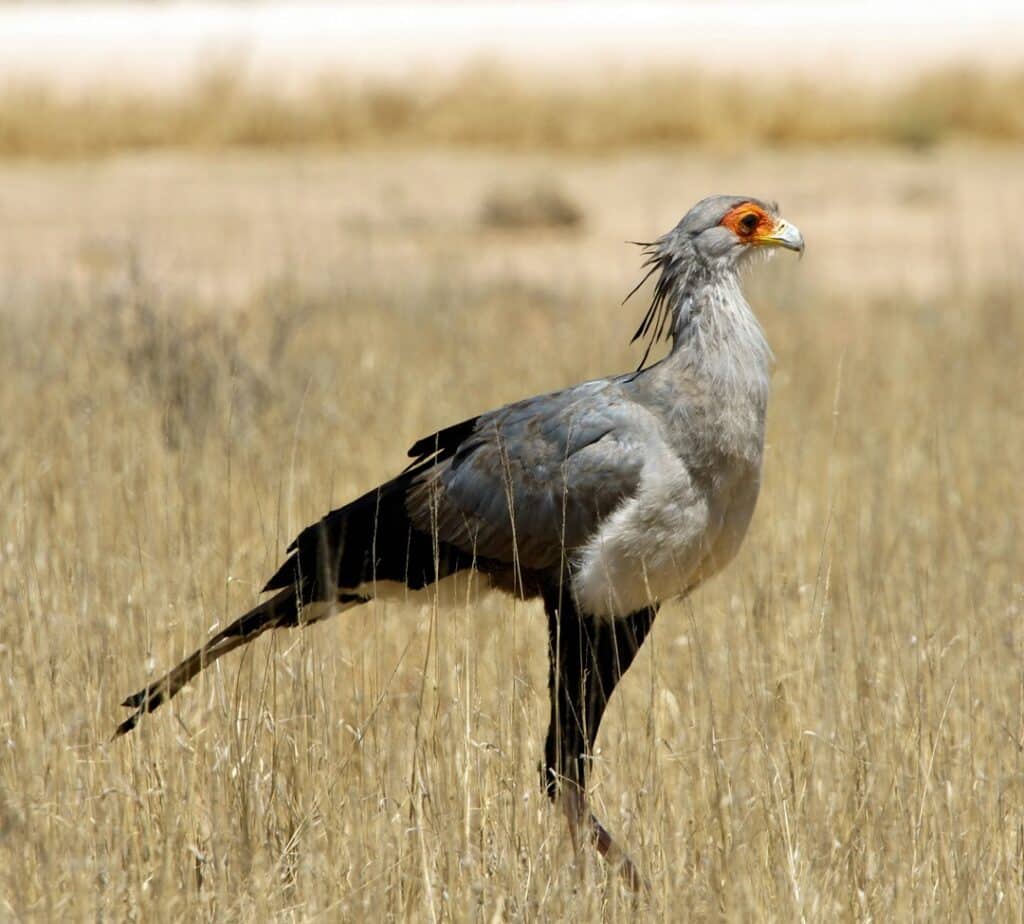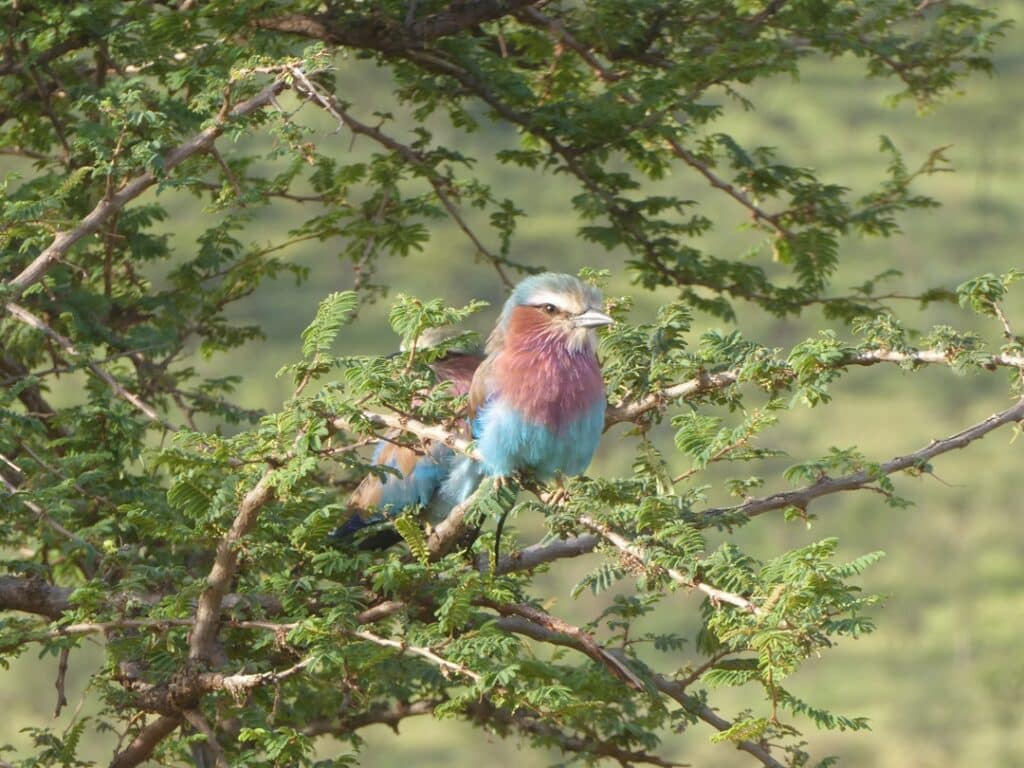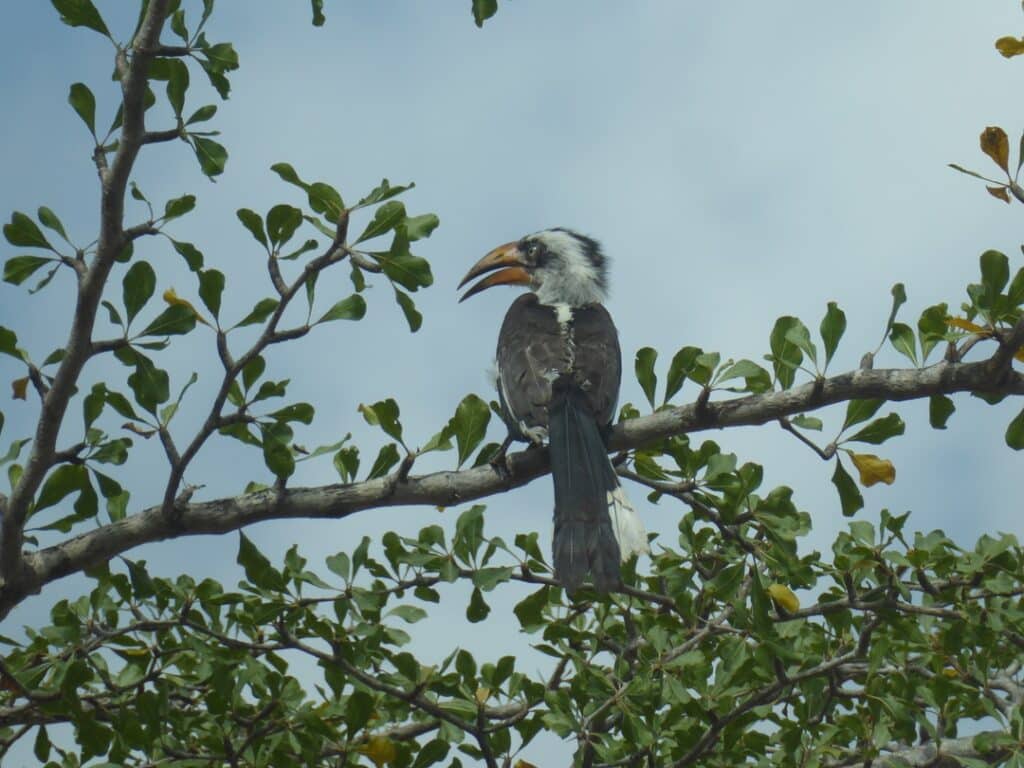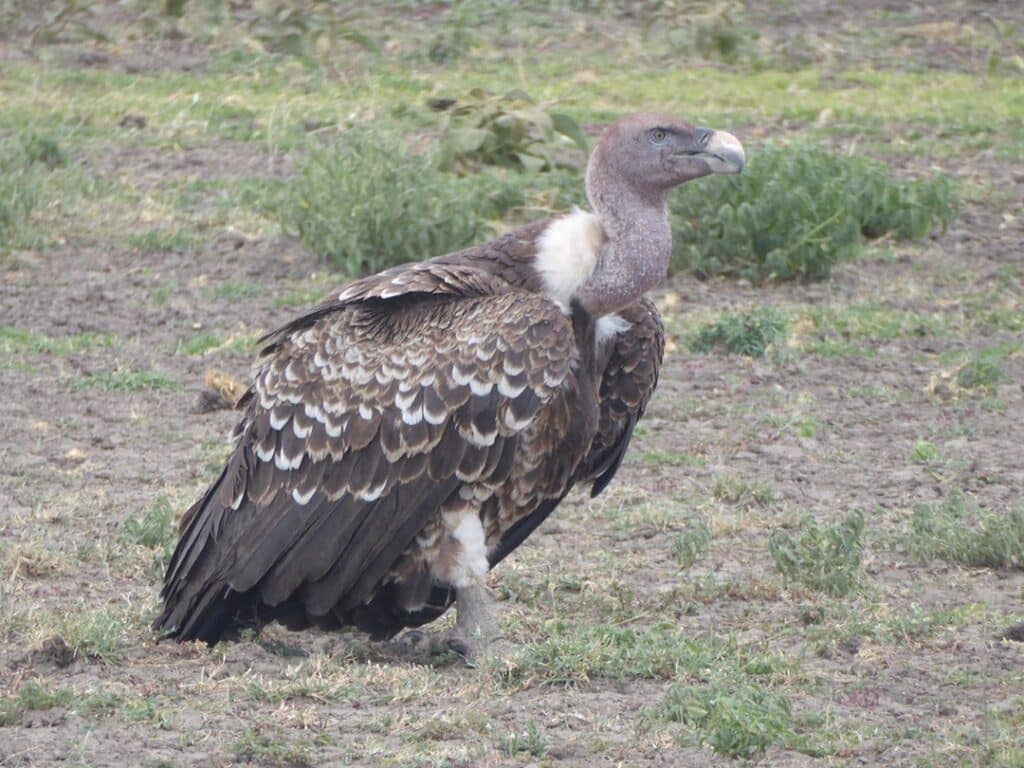Discover the Big Five Animals in Tanzania & Other Wildlife
Embarking on a safari to see the big five animals in Tanzania is an adventure of a lifetime. These majestic creatures, known as the “big five”, due to their difficulty to hunt and their impressive size, include the African Elephant, African Lion, Cape Buffalo, African Leopard, and Rhinoceros.
Tanzania, a country blessed with some of Africa’s most famous national parks and conservation areas, offers some of the best settings in the world to witness the big five in their natural habitat. Along with the adventure to see the big five in Tanzania, there are many other animals that you will get to see on a typical day on a safari.
Disclaimer: This post may include affiliate links. If you click one of them, I may receive a small commission at no extra cost to you.
Ready to Book A Safari of a lifetime?
I am partnered with CloudSafaris and you can get a discount with your booking. Visit Cloud Safari Trips page.
Enter the referral code: THEWORLDTRAVELGIRL to receive $100 off your booking
NOTE: You will not be charged right away when booking a safari online. They will be in touch to review details and plans before anything gets confirmed.
If you want me to help you decide what to do and plan your trip, then feel free to reach out to me to help you put together an amazing itinerary for your safari!
Why Are They Called the Big Five?
Historically, the term “big five” was coined by hunters to refer to the five most challenging animals in Africa to hunt on foot. Today, the term is synonymous with safari adventures, symbolizing the incredible biodiversity of the African continent. The chance of seeing all of the big five in Tanzania is possible, but may be harder than you think for some of the species.
The Big Five Animals in Tanzania
Elephant
It’s truly awe-inspiring to encounter the largest creature on Earth in its natural environment. These majestic creatures, can weigh up to 7,000 kilograms, coupled with their resonant trumpet calls, instills a sense of urgency to yield the right of way if they perceive a threat.
Elephants can suck up 220 litres of water a day with their trunk, and they also use it to reach high up trees for food or to graze on short grass. Their trunk has 50,000 muscles!
Female elephants form tight-knit familial groups, averaging 11 cows and calves, maintaining strong bonds that can span over five decades. On the other hand, males typically depart from their birth clan around the age of twelve, either venturing off on their own or joining bachelor herds.
It’s not uncommon to spot these magnificent beings near watering holes adjacent to lodgings. While they are typically tranquil creatures when undisturbed, it’s imperative to give them space and respect their territory; provoking an elephant can lead to potentially dangerous encounters.
Elephants can almost always be guaranteed to be seen on any safari. I saw many elephants when I was on my safari trip in Tanzania in all the parks that I visited.
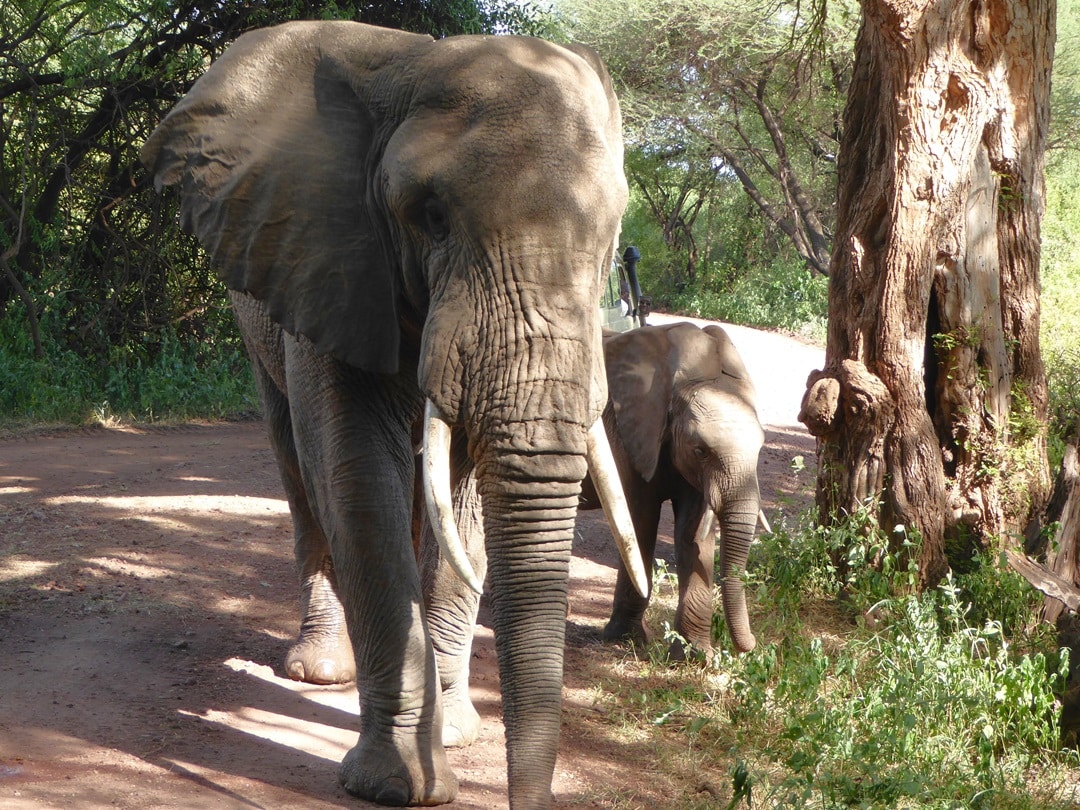
Lion
Known as the “King of the Jungle”, witnessing the pride of lions in their natural domain is an experience that etches itself into your memory. In one sighting I saw 23 lions! It was an amazing thing to experience! And they are so used to safari vehicles that they will walk right past them without any issues. At one point I could almost reach out and touch one!
When a lion and lioness mate, they can have up to five cubs. The lionesses of the same pride will often give birth around the same time, so that they can help raise, protect and play with the young in the pride. The male’s role only role is to defend the territory from other younger males that are looking for a pride to dominate.
Lions are inherently social creatures, hence their affinity for living in prides. Within these groups, females typically take charge of hunting duties, while males may partake in scavenging opportunities. However, regardless of gender, lions share a common love for leisure, often spending roughly 20 hours a day lounging beneath the shade of trees, a favored pastime.
If you are lucky enough to hear their iconic roar, then you will remember that for a lifetime, I guarantee.
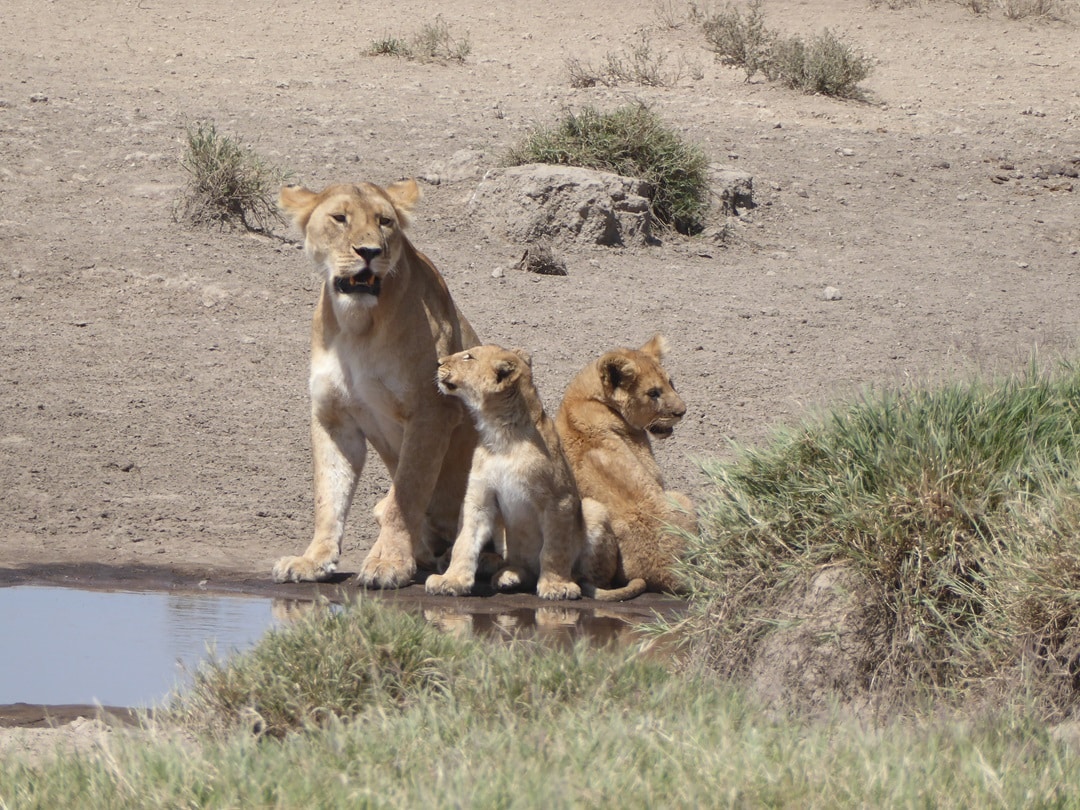
Cape Buffalo
These animals stand as one of Africa’s most formidable creatures, weighing 425-870 kg (935-1910 pounds), boasting few natural adversaries. While lions may attempt to prey upon buffalo calves, they often face retaliation from enraged herds, suffering the consequences of their efforts.
Buffalo populations thrive abundantly, presenting ample opportunities to witness herds numbering well over a thousand of these captivating beasts. These animals can be found in most national parks, but they will be found in abundance in the Ngorongoro Crater and Serengeti National Park.

Leopard
This creature stands as the most introverted and hard-to-find among the big five animals in Tanzania. Leopards excel in the art of concealment as they are one of the most elusive and solitary animals. The markings on a leopard are called rosettes, and if they choose to remain unseen, these help them to blend into their surroundings.
Living in solitary, a leopard can give birth for up to three cubs. They will spend the time keeping them hidden and often moving their dens frequently. A cub may become independent around the age of one, but it is common for them to stay with their mother until they are two years old.
Leopards are known for stalking their prey and can spend hours hiding in the grass before they pounce with fierce speed. Their abilities to climb trees are better than lions because of their strong shoulders and front legs so they can pull themselves up tree trunks easier than lions.
If you are lucky enough to see a leopard, the chances are high that you’ll find a leopard lounging on a tree limb. They have a preference for the sturdy branches of a Kigelia africana, known as a sausage tree, as their resting place. Remember to gaze upwards: a leopard might be there, quietly enjoying its meal atop a tree, away from the reach of lions and other hunters.
I was lucky enough to find two leopards in one tree while on safari in the Serengeti.
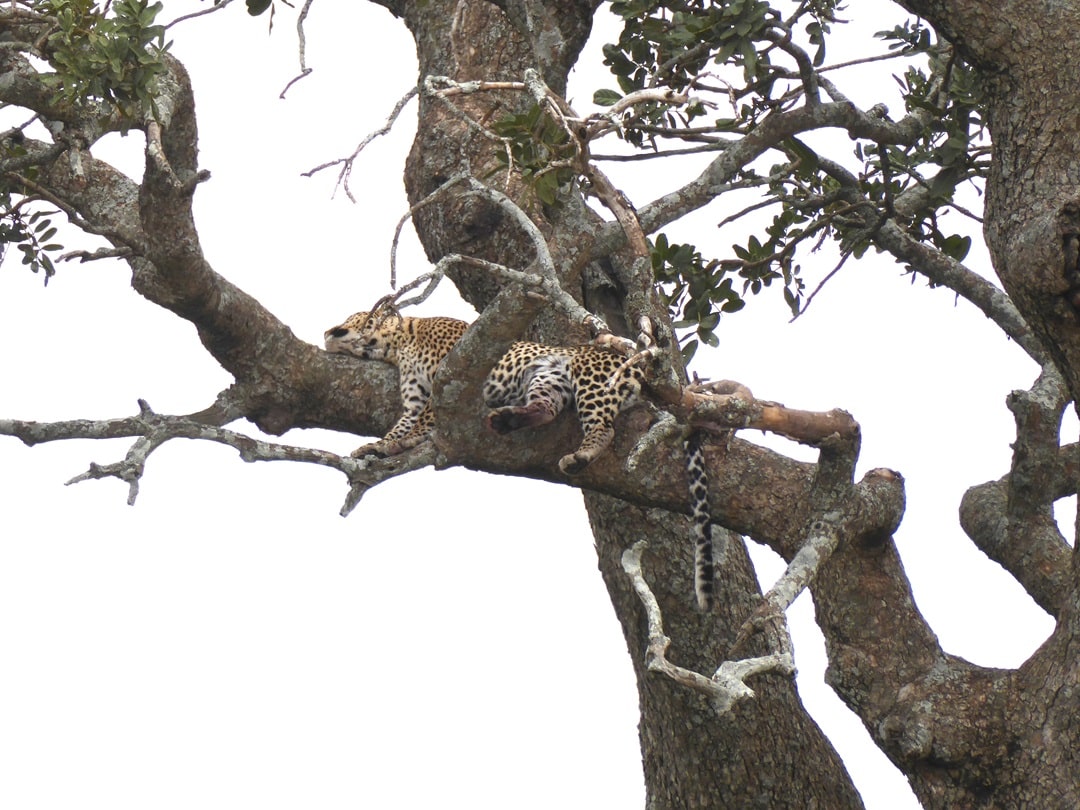
Rhinoceros
Tipping the scales at 2,500 kilograms, Africa is home to two distinct species of rhinos: the black and the white rhinoceros. Contrary to what the name suggests, the white rhinoceros is not actually white but shares the same grey hue as its counterpart.
Tragically, the value of a rhino’s horn surpasses that of gold, leading to a drastic decline in their numbers within the African ecosystem due to poaching. From a thriving population of 1,000, the numbers have plummeted to fewer than 70 individuals over recent decades.
With the female rhino birthing only once every five years, spotting a rhino in the Serengeti National Park is a rare and challenging feat. The critically endangered black rhino can be seen in the Ngorongoro Conservation Area. With the aid of an experienced guide, you might just be in for a stroke of luck!
Unfortunately our efforts to find a rhino in both of these areas were unsuccessful. I was lucky enough to see a white rhino when I was on safari in South Africa.

Other Wildlife You Might See on a Safari In Tanzania
While the big five animals in Tanzania are a significant draw, the wildlife diversity extends beyond them. There are many animals you may get the chance to see when you embark on a safari in Tanzania. Here are some of the most common ones you may be lucky to encounter.
Cheetah
Cheetahs are known for their sleek, spotted coats and remarkable speed, navigating with unparalleled agility, often reaching speeds of up to 60 miles per hour in pursuit of prey. These majestic cats rely on their keen eyesight and stealthy approach to ambush gazelles and other prey. I never saw any cheetahs in South Africa, but I saw lots of them in Tanzania.
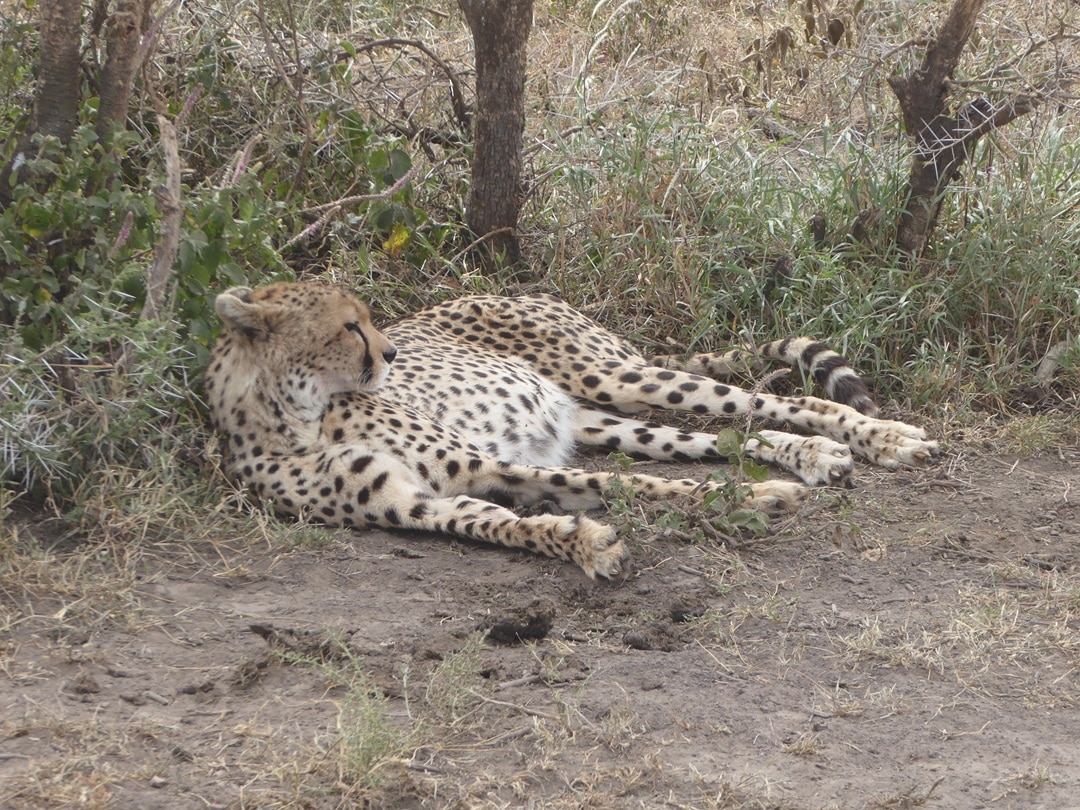
Giraffe
Giraffes gracefully roam the plains, standing 16-18 feet, with their towering necks and distinctive spotted coats making them unmistakable figures. These gentle giants, with their tongues capable of grasping and specialized hearts to pump blood all the way to their heads, peacefully grazing are unmistakable icons on any safari.

Zebra (Burchell’s)
Burchell’s zebras, with their unique black and white stripes, roam the grasslands of Tanzania in familial herds, showcasing their social and cooperative nature. These resilient creatures play a vital role in the ecosystem as both grazers and prey, embodying the dynamic biodiversity of Tanzania’s plains. Have you ever seen two zebras with their backs to each other, facing opposite ways? The reason they do that is so that they can watch predators from all sides.

Hyena (Spotted)
Spotted hyenas, with their powerful jaws, keen senses, and unmistakable spotted coats, are iconic predators, often forming tight-knit clans led by dominant females. These scavengers are renowned for their haunting laughter-like vocalizations, echoing across the night as they hunt cooperatively or scavenge on carrion. Hyenas are one of my three favorite animals you can see on a safari.
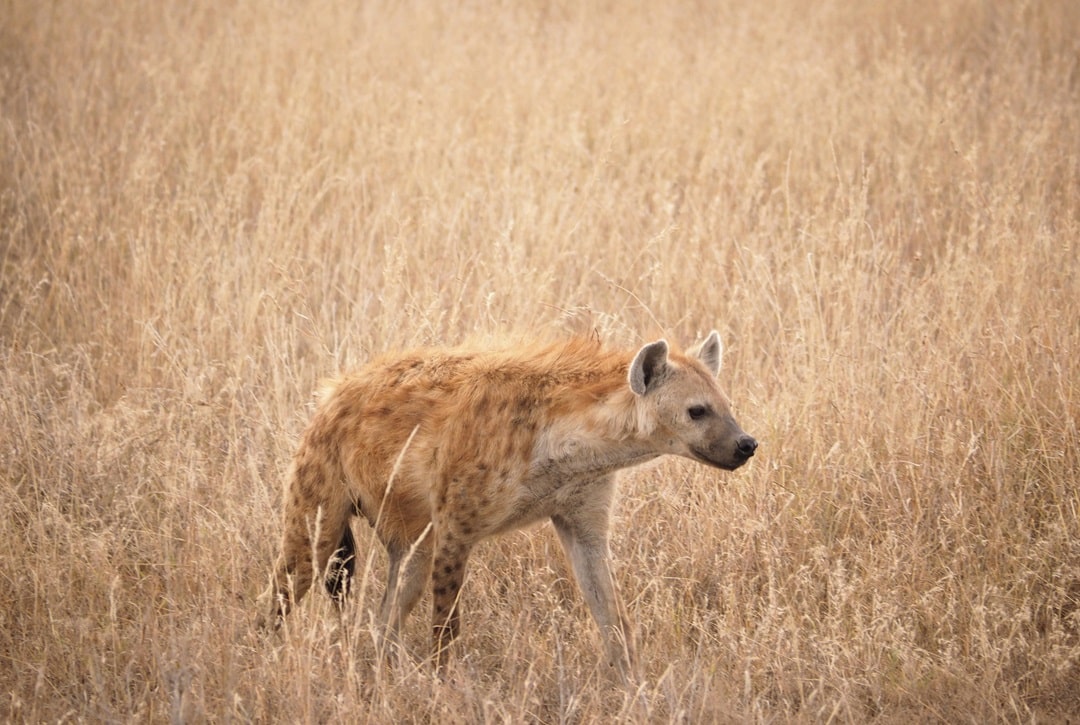
Hippo
Hippos inhabit the waterways and riverbanks of Tanzania, where they spend much of their time submerged to stay cool. Despite their seemingly docile appearance, these territorial creatures are known for their aggressive behavior, particularly during mating season when conflicts arise over dominance. It’s always great to catch hippos out of the water if you get the chance to!
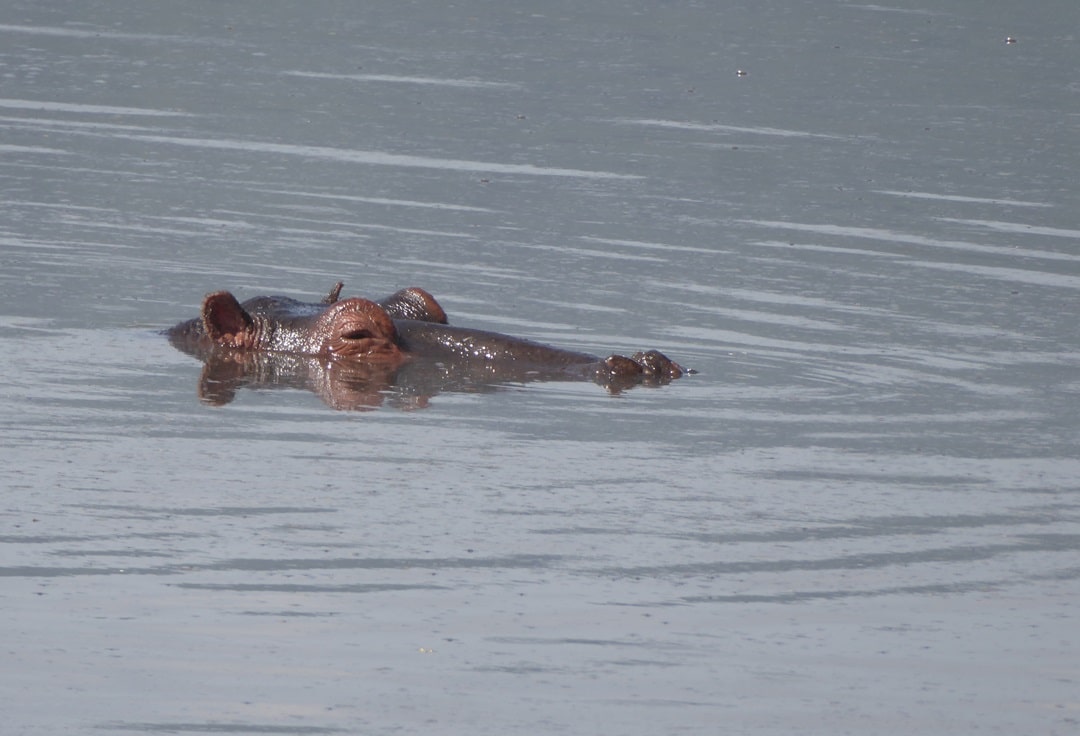
Nile Crocodile
Crocodiles lurk along the banks of rivers and lakes, embodying both fear and fascination in the hearts of onlookers. These predators, capable of swift and stealthy attacks, play a crucial role in controlling prey populations and maintaining the balance of aquatic ecosystems. During the Great Migration across the Mara River, between Kenya and Tanzania, you can often see these crocodiles waiting in the water to catch an unsuspecting zebra or wildebeest.
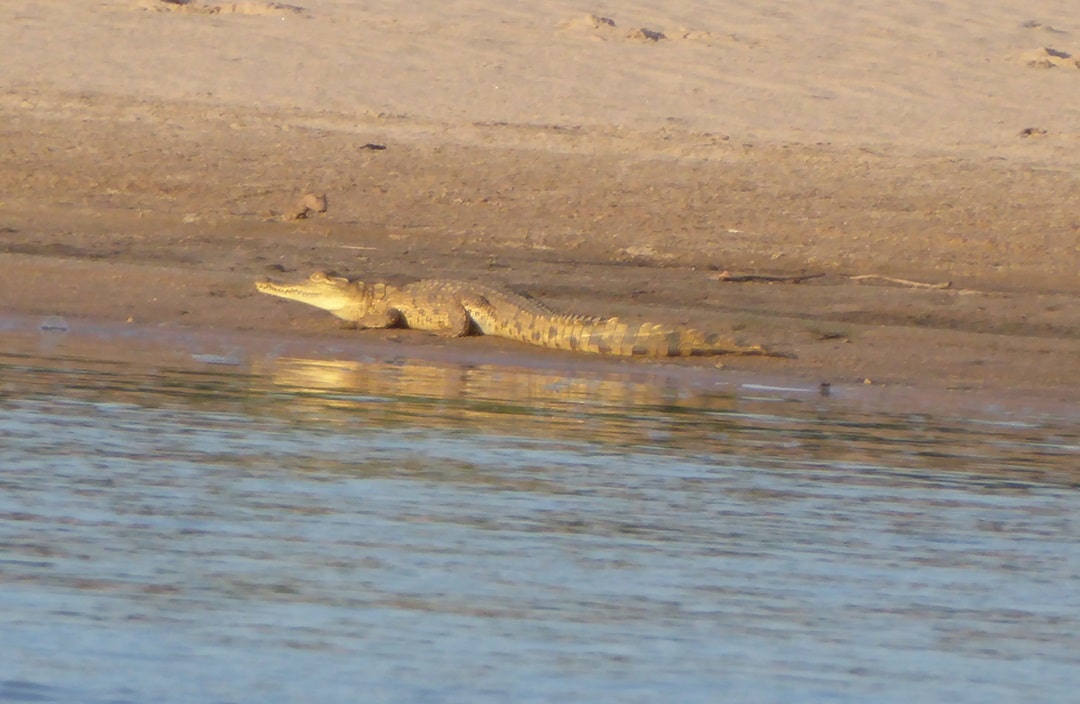
Wildebeest (Blue)
Blue wildebeest, with their distinctive silvery-blue coats and impressive migratory herds, take part in the Great Migration in search of greener pastures. These resilient grazers, renowned for their endurance especially during migration, play a vital role in shaping the landscape and sustaining the balance of the ecosystem.
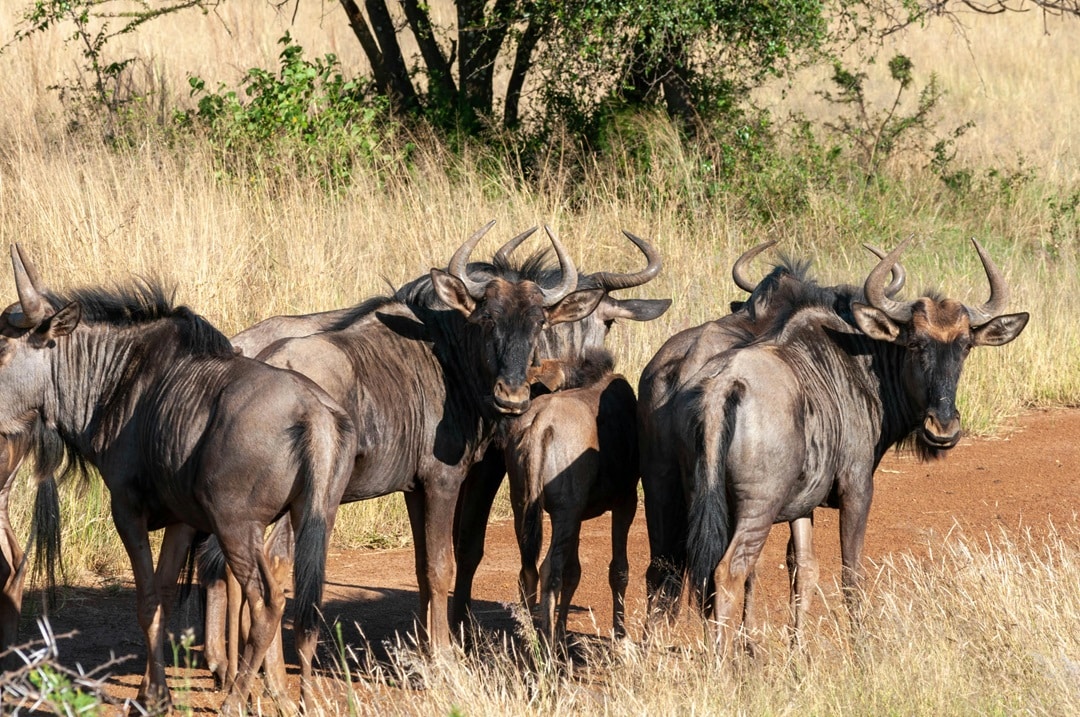
African Wild Dogs
African Wild Dogs, also known as painted wolves, these hunters roam the untamed landscapes of Tanzania in highly organized packs, characterized by their mottled coats and intricate social structures. They are the most skilled hunters to bring down prey much larger than themselves, showcasing both intelligence and teamwork.
Despite their endangered status, African wild dogs play a crucial role in controlling herbivore populations. I travelled down to the Selous Game Reserve with the hope of seeing some and was lucky enough to find some!
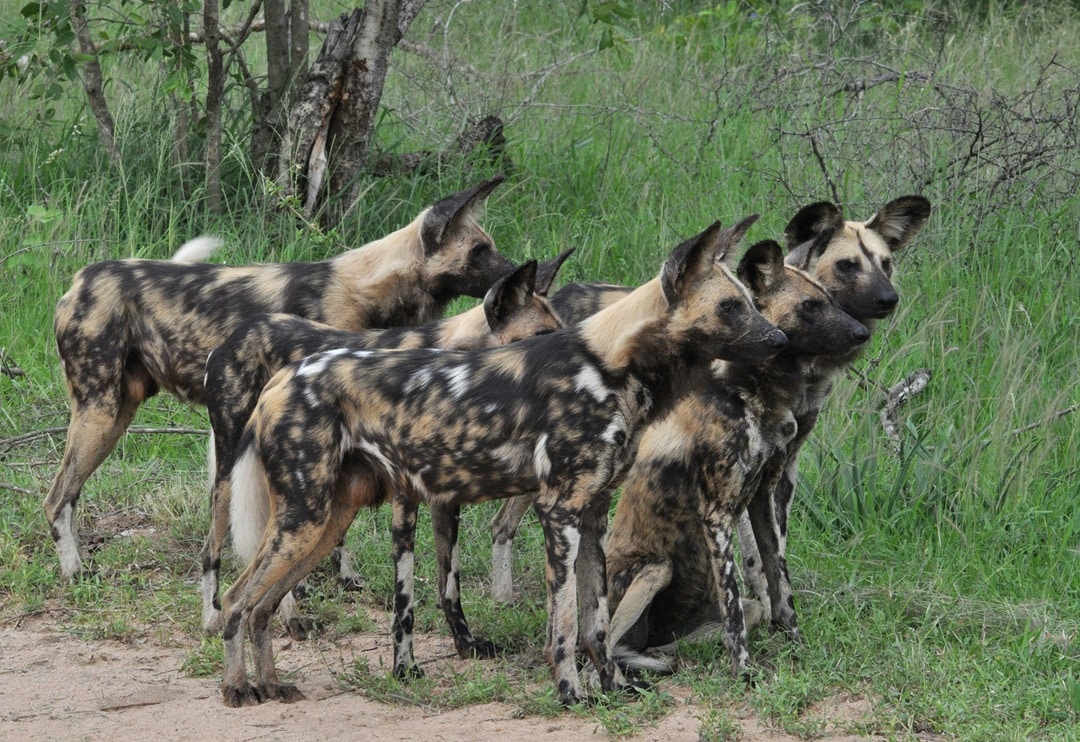
Warthog
Their unmistakable appearance, marked by tusks and warty protrusions on their faces, are a common sight in Tanzania’s grasslands and woodlands. Despite their ungainly appearance, they are adept runners, capable of reaching surprising speeds to evade predators such as lions and hyenas.
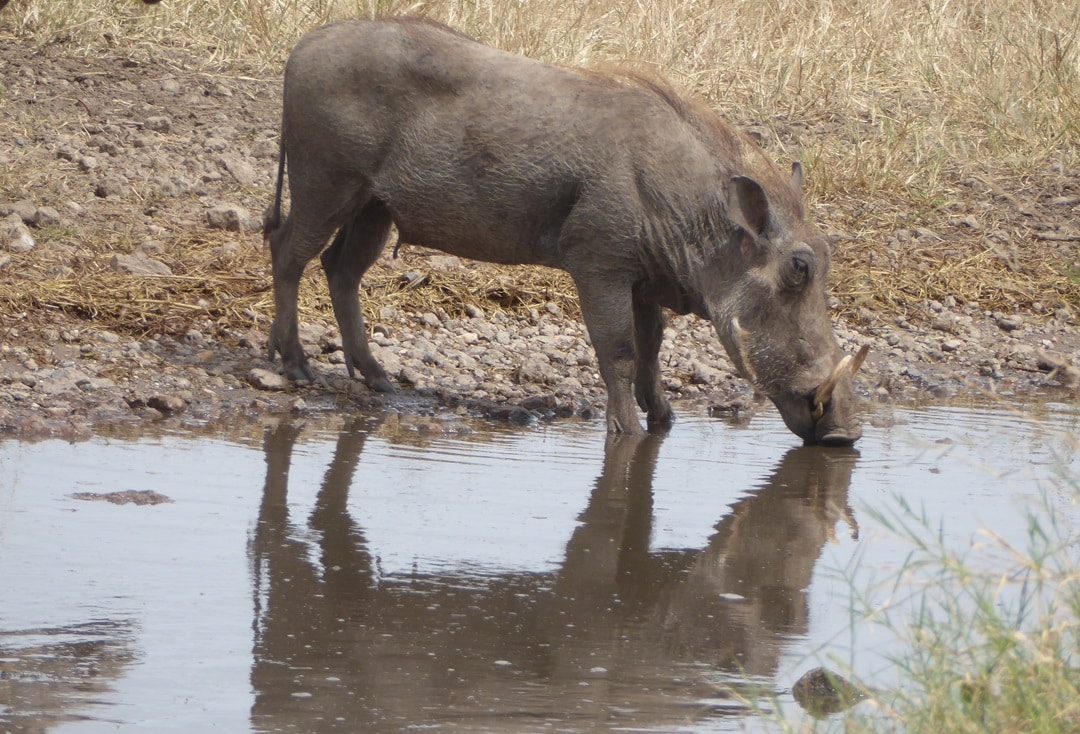
Black-backed Jackal
Black-backed jackals resemble coyotes, found in North America. These elusive predators roam the plains in search of food. These canines are adept at scavenging and hunting small prey. Their haunting cries echo across the African landscape, a testament to their place as both hunters and scavengers.
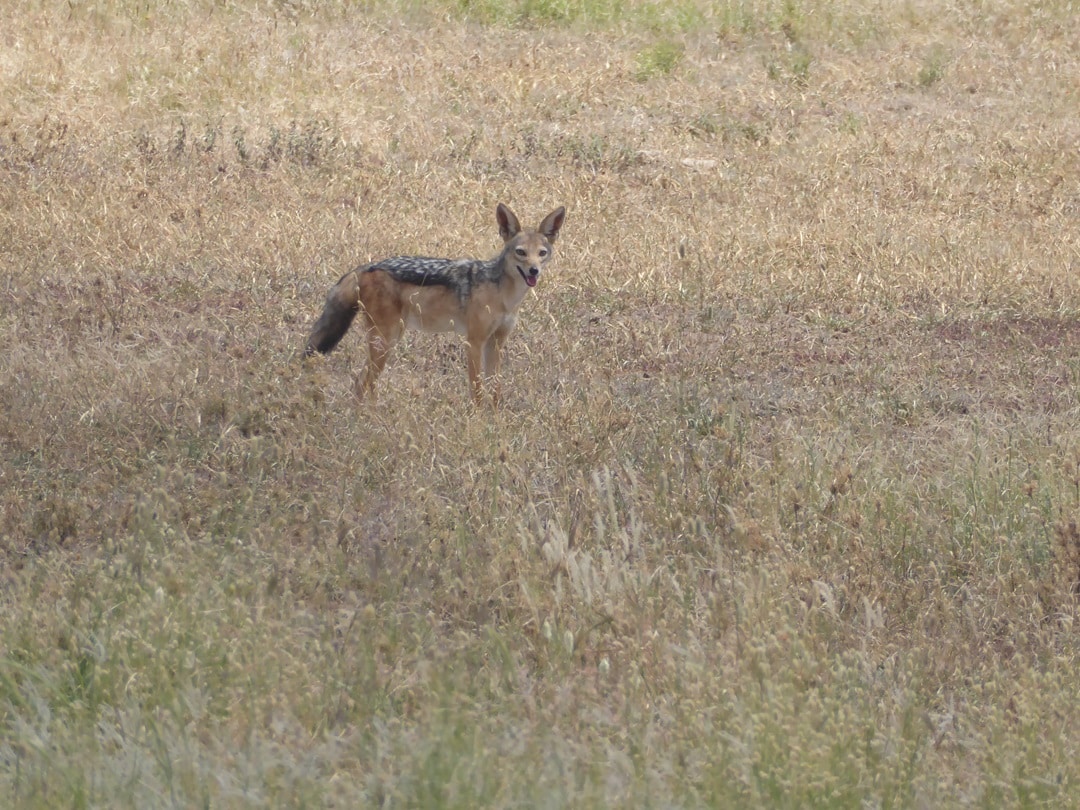
Baboons
Baboons are prevalent across Tanzania, where they inhabit various habitats ranging from savannas to forests. Known for their social structures and adaptability, Tanzanian baboons play a crucial role as both seed dispersers and prey for larger predators like lions and leopards. In many cities, baboons are actually considered to be a pest for the damage they do to crops and other things.
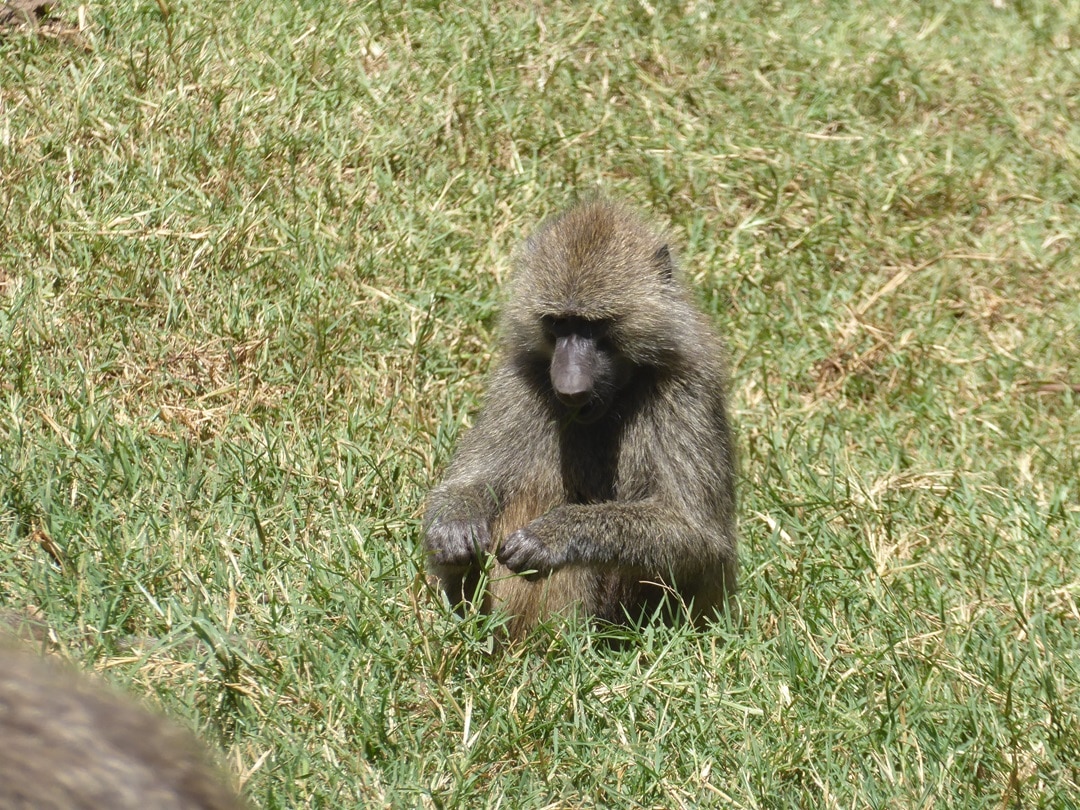
Hartebeest
Characterized by their distinctive elongated faces and lyre-shaped horns, they roam the expansive plains and savannahs of Tanzania in small herds, embodying grace and resilience in their movements. These antelope species, known for their remarkable speed and endurance, navigate the grasslands with agility, often serving as prey for Tanzania’s predators such as lions and cheetahs.
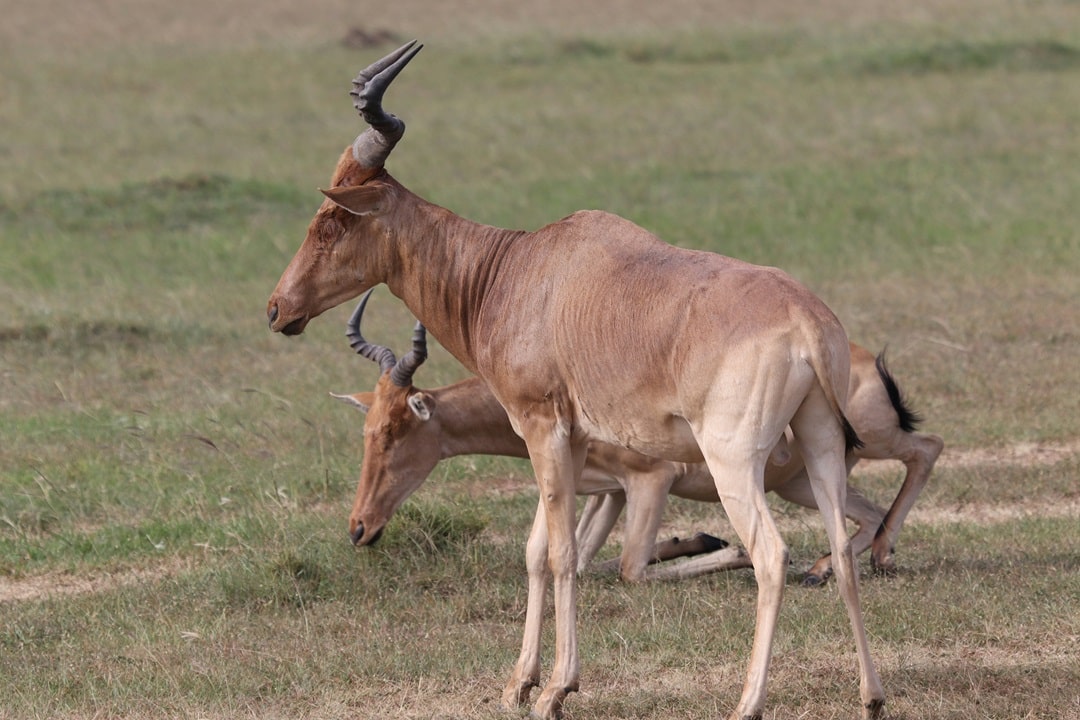
Steenbok
These antelopes are so tiny! Standing 16” to 24” in height, they blend into their surroundings with their reddish-brown coats and large ears. These solitary antelopes are very agile and alert enabling them to evade predators such as leopards and eagles.
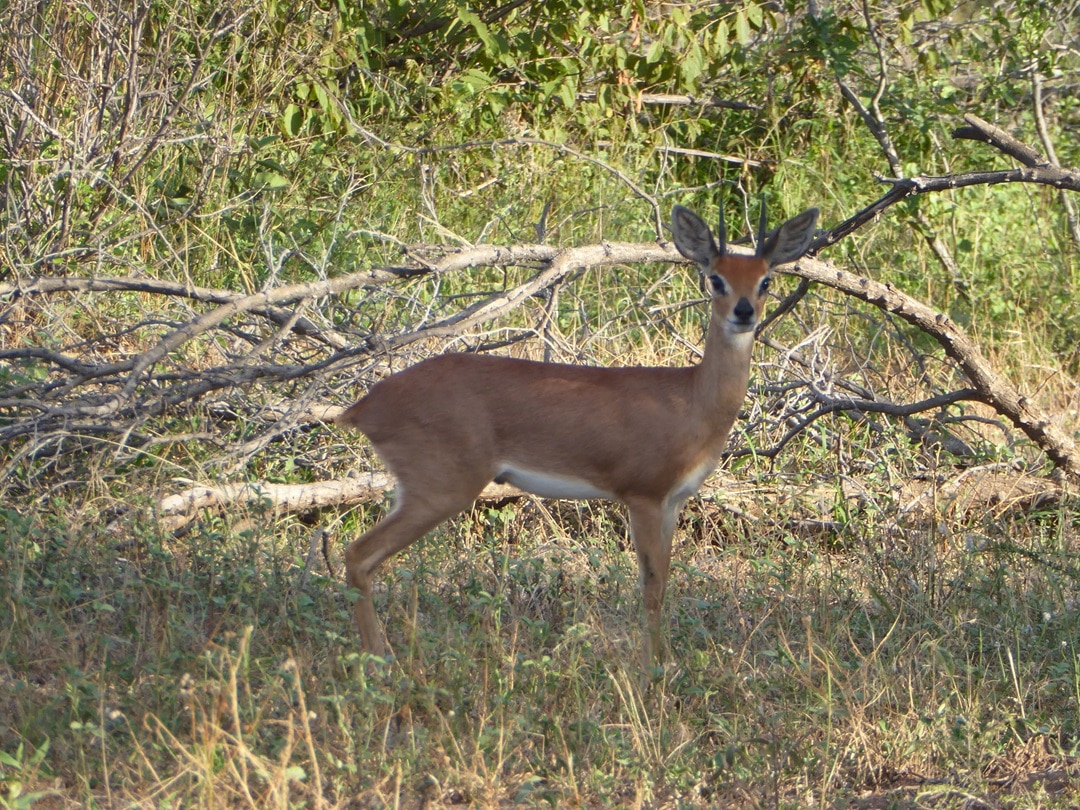
Greater Kudu
The iconic Greater Kudu, with its spiral horns and elegant stature, blend seamlessly into their surroundings with its earth-toned coat. These elusive antelopes, renowned for their impressive jumping ability and acute senses, navigate the dense vegetation with grace, often seeking refuge from predators such as lions and leopards.
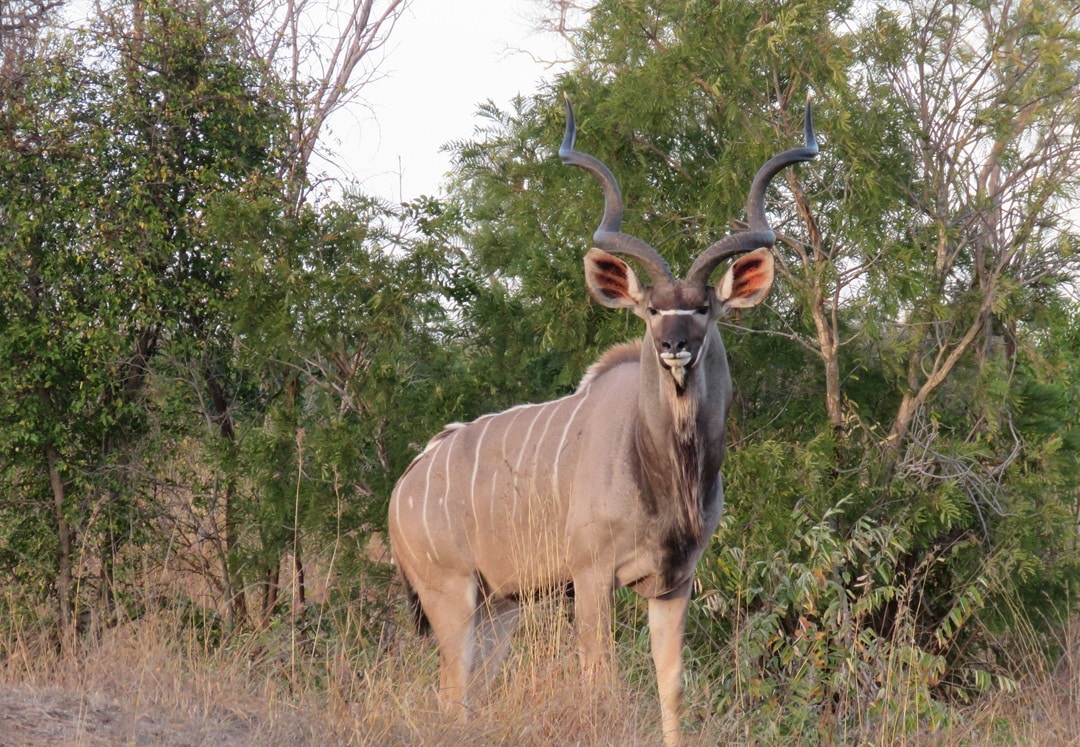
Springbok
These are another one of the agile antelopes that inhabit the open plains and deserts of Tanzania. With their cinnamon-colored coats and striking facial markings, they showcase their remarkable speed and agility in graceful leaps known as pronking.
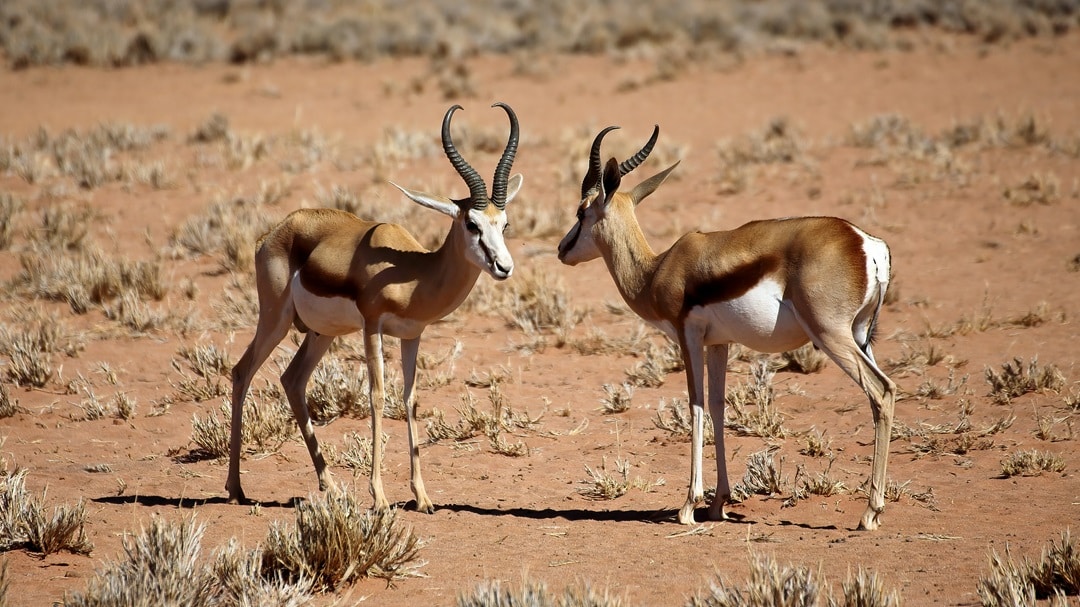
Birds in Tanzania
Whether you are a bird enthusiast or just starting to birdwatch, you will not be disappointed as Tanzania boasts an impressive array of birdlife, with over 1,100 species recorded. Some species you can expect to see are the iconic secretary bird, lilac breasted roller, pale billed hornbill, or even a white backed vulture, the scavenger of the savannah. They all add a vibrant layer to the safari experience.
Most Dangerous Land Mammals in Africa
These animals are usually admired from a distance, though when it comes to elephants, they do not seem to care or be threatened by safari vehicles, unless you encounter a male on his own. Being in a safari vehicle, with trained guides, you will be safe while on safari.These are the three most dangerous land mammals:
- Hippo
- Elephant
- Cape Buffalo
Most Successful Hunters in Africa
Most people think that lions are the most successful hunters in Africa. Surprisingly, they have one of the lowest success rates. My favorite, the African Wild Dogs, are the most successful hunters!
| Animal | Success Rate | Style |
| African Wild Dogs | 70% to 90% | Pack Hunting |
| Cheetahs | 50% | Pursuing with speed |
| Leopards | 40% to 50% | Stalk & Ambush |
| Hyenas | 30% to 50% | Pack Hunting |
| Lions | 30% to 40% | Pack Hunting |
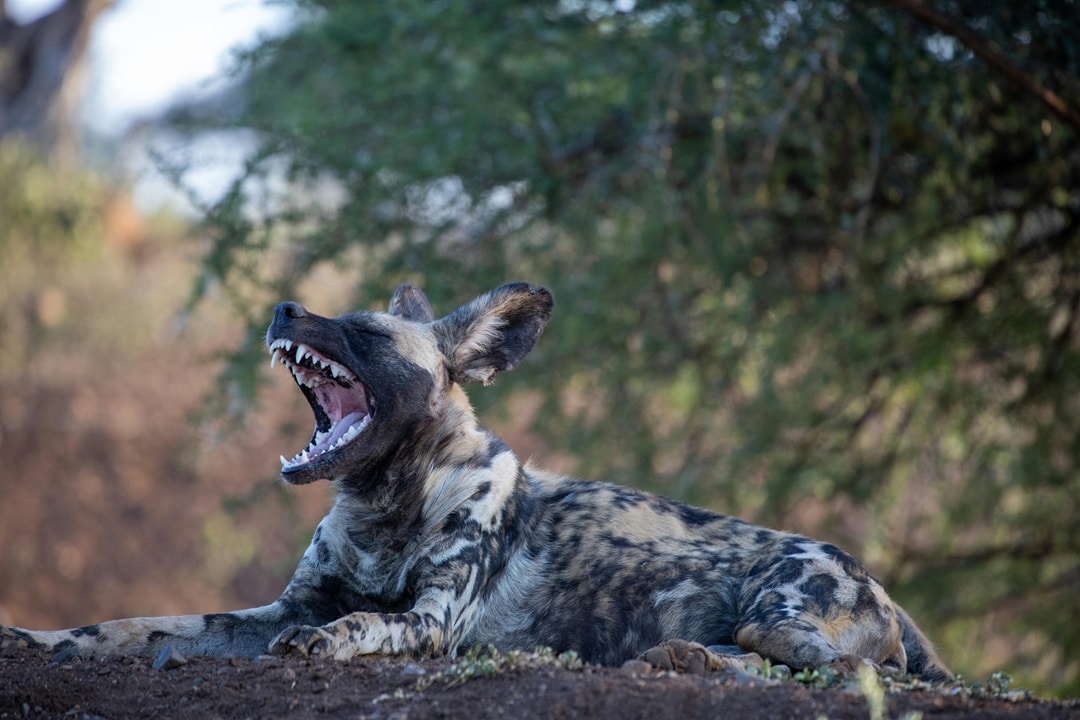
Best Place to See the Big Five in Tanzania
You have a chance to see the big five in any of the safari parks in Tanzania, however some of the parks will provide a better chance. Ngorongoro Crater gives you a rare chance to find a black rhino, Nyerere National Park has a chance for the endangered African Wild Dogs and the Serengeti provides an opportunity to spot a leopard. Just remember that nothing is ever guaranteed!
Conservation Efforts
The conservation status of the big five animals in Tanzania varies with efforts underway to protect these species from threats such as habitat loss and poaching. National parks and conservation areas play a crucial role in the efforts to protect wildlife, ensuring that future generations can also experience the awe of encountering the big five in Tanzania.
If you are ready to venture to Tanzania and find the big five, then I can help you. I work with Cloud Safaris in Tanzania and can help you plan your trip. Please reach out to discuss further.

A safari to see the big five animals in Tanzania is more than a wildlife viewing experiencre. It’s a journey into the heart of nature’s most stunning landscapes and a chance to witness these magnificent creatures. Whether you’re marveling at the big 5 animals in Tanzania or the myriad of other wildlife and birds, each moment is a treasure, promising memories that will last a lifetime.
If you enjoyed my post, follow me on social media or subscribe to my newsletter below, so you can stay connected on future posts, trips, tips and more.



